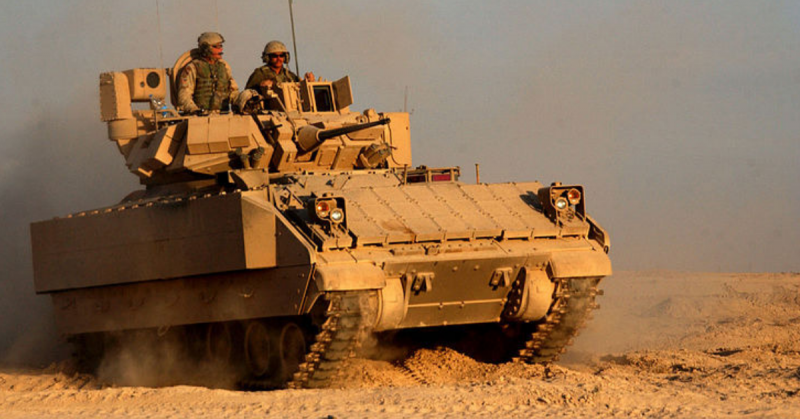The Cold War saw a lot of advancement and diversification in the design of fighting vehicles. Though not directly fighting each other, the world’s great powers were highly motivated to improve their vehicles, while other nations also created their own innovations.
Disarmament
The Cold War started in a period of disarmament. The Second World War was over. Britain and America were hurrying to disband the massive armed forces they had assembled, cut their state military expenses, and return to life as normal.
In this atmosphere of relief, little thought was given to developing the next generation of military vehicles. But that quickly changed as tensions rose with the USSR. Designers on both sides of the Iron Curtain began developing newer, better military machines.
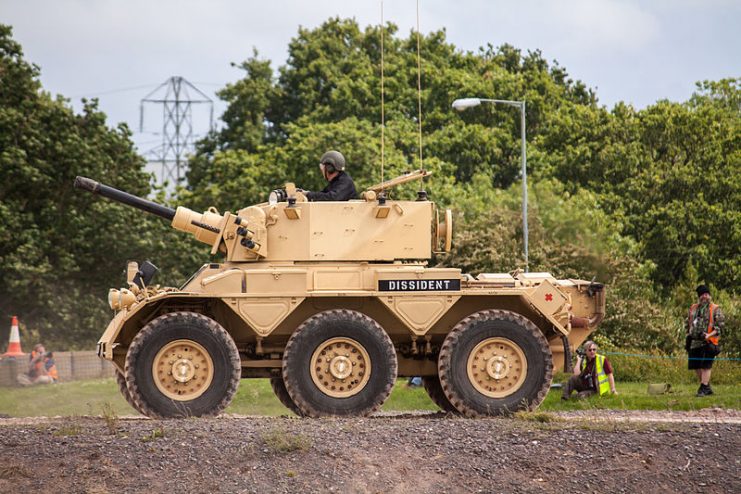
American Arms
During the early Cold War, the world was flooded with American vehicles. The USA had built up huge stockpiles of both armored fighting vehicles and soft-skinned support ones. Now they used them to supply nations that needed to rebuild but lacked substantial arms industries, like France, West Germany, and Italy. Even countries that hadn’t taken part in the war were happy to buy relatively modern American vehicles on the cheap.
The Korean War showed the problems of fighting with World War Two surplus. Some vehicles were no longer good enough for their roles. Others were out of production, making it hard to obtain spare parts. It was time to move on.
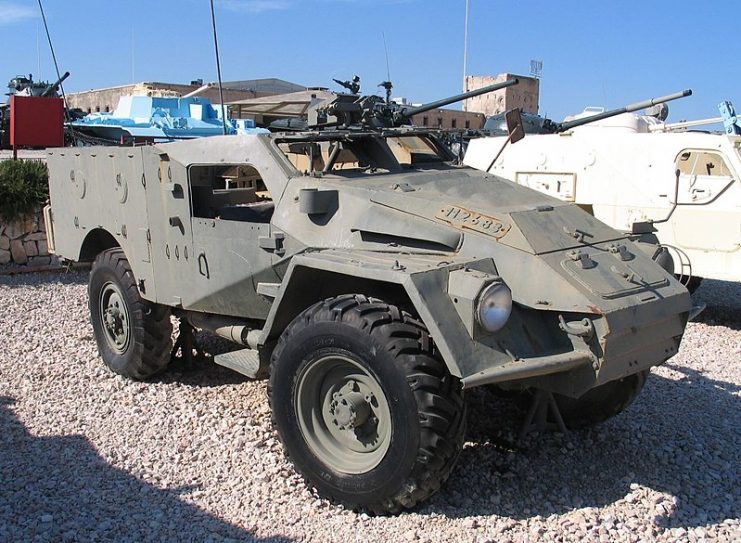
By Bukvoed CC BY 2.5
APCs
One of the most important innovations of the immediate post-war years was the rise of the armored personnel carrier (APC).
The war had seen predecessors to the APC – German armored half-tracks, then gun carriers turned into transports by ingenious Canadian troops. But it was the Cold War, with its threat of chemicals and radiation on the battlefield, that really pushed forward the development of protective troop transports.
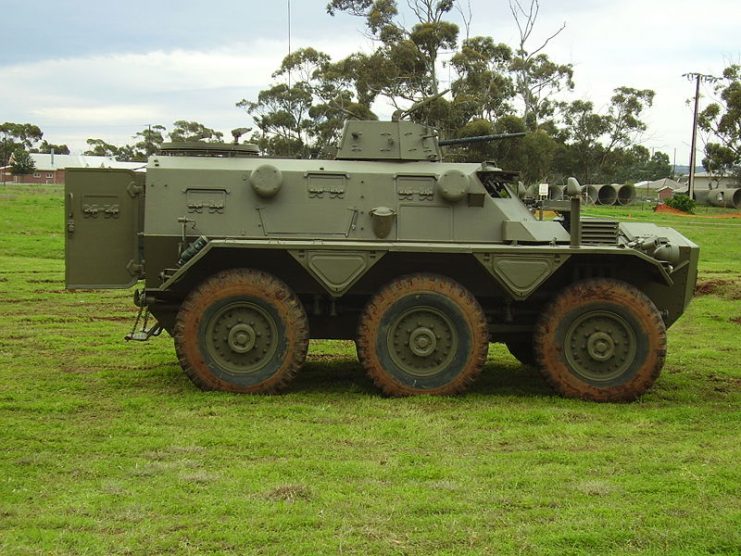
One of the early models was the British Saracen, a six-wheeled armored transport rushed into production for the euphemistically named “Malayan emergency”.
The Americans opted for tracks rather than wheels. After trying several designs, they chose the M113. Essentially just a box on tracks, the M113 had aluminum armor to make it light enough for air transport.
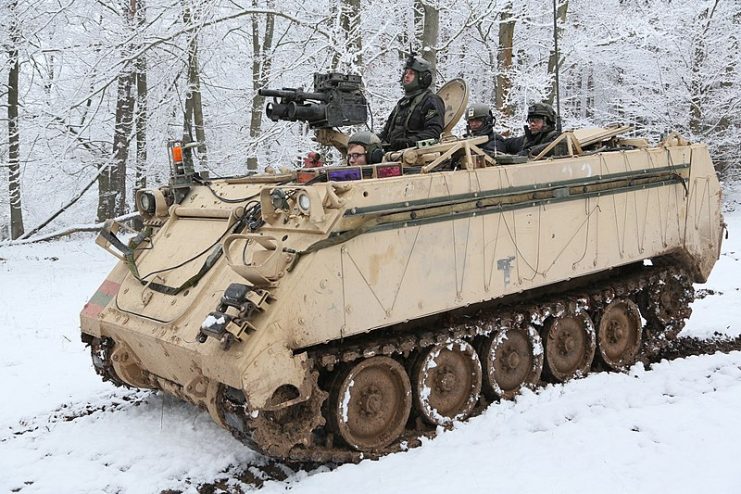
The Soviets developed a series of sturdy, well-designed APCs, using first wheels and then tracks. Like those in the west, they were equipped with increasingly sophisticated protection against nuclear, biological, and chemical agents (NBC).
Out of the Soviet work came the next stage in troop transport.
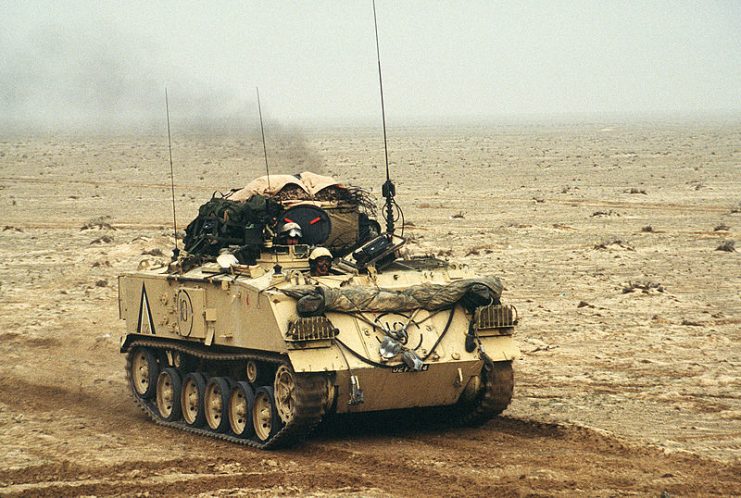
IFVs
APCs were essentially armored taxis, their whole role being to take troops to the battlefield. They often carried machine guns, but they weren’t designed to fight.
In the 1960s, Soviet designers developed another approach – the infantry fighting vehicle (IFV).
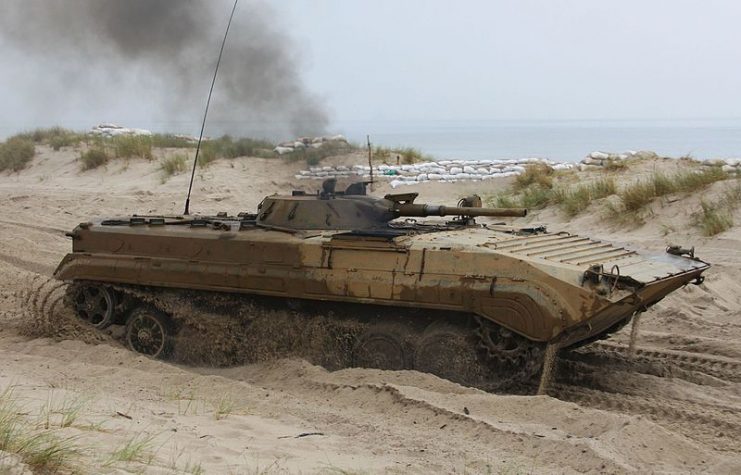
The IFV was still a transport vehicle, with space to carry a squad of infantry. But it was also a fighting vehicle, with a turret carrying substantial weaponry. The Soviet BMP-1, which started this trend, carried a 73mm gun and anti-tank guided missiles. It was also amphibious, like many Soviet military vehicles, to get it across rivers.
Other countries soon began imitating this approach, equipping their armies with vehicles that, to the casual observer, look like small tanks.
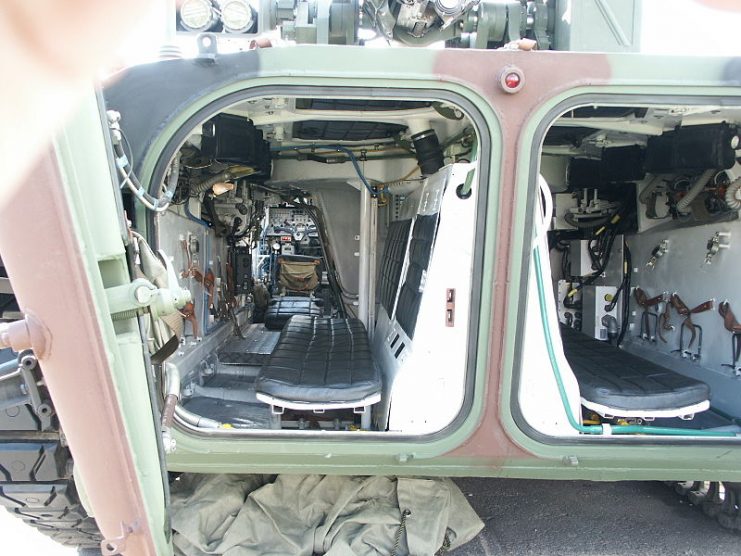
Changing Tanks
At the start of the Cold War, the British had perhaps the best tank in the world. The Centurion arrived in 1945, replacing the string of poorly designed vehicles that Britain had produced over the previous decade. An effective cross-country traveler and combat vehicle, the Centurion proved its worth in action in Korea.
The war had taught designers a lot about tanks. The improvements built on this led to decades of steady improvement rather than dramatic breakthroughs. Gun stabilization was one of the most important developments. Combined with a growing range of sensors and night vision equipment, it allowed more accurate gunnery. This equipment crowded turrets full of electronic gear.
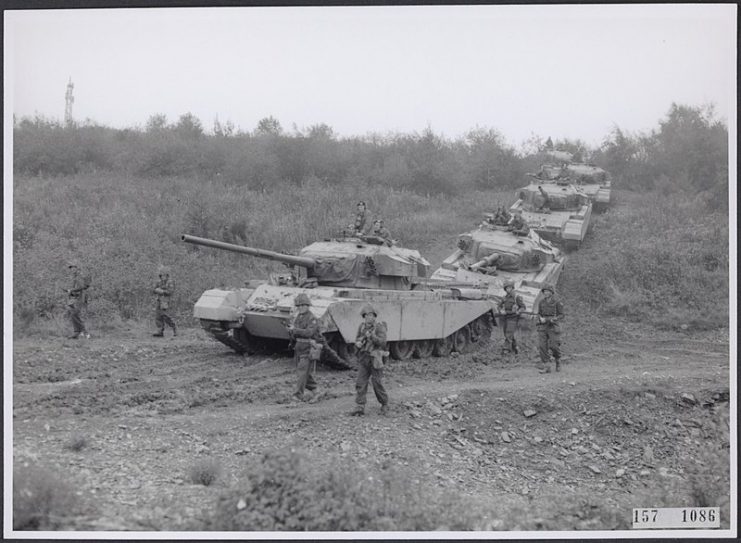
Developments in Armor
The most widely used developments came in armor design. Initially, this followed trends begun during the war. Flat plates were replaced by sloping surfaces to deflect hits. Riveting gave way to welding and molding to create a seamless and so less vulnerable surface.
The traditional approach to making armor tougher had been to make it thicker. But past a certain point, this became increasingly counter-productive, as weight killed mobility. Designers explored alloys to make better alternatives. Aluminum armor became particularly popular for vehicles to be transported by air.
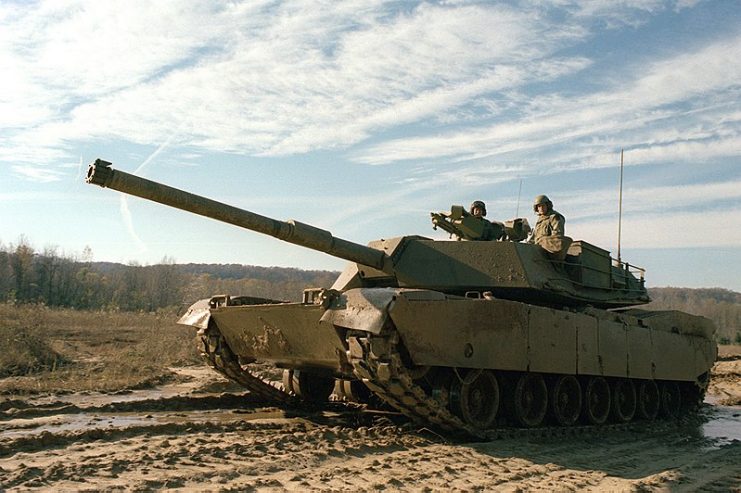
By the end of the Cold War, more innovative armor was being used. Composite armors such as the British Chobham Armor used layers of metal and ceramics to create better protection against increasingly sophisticated weapons. The exact design of such armor is often a closely guarded secret.
Transport
Soft-skinned support vehicles remained vital to fighting formations. America’s sturdy, reliable Jeep remained in use for decades, but other vehicles moved on. Multi-wheeled, high mobility carriers were created to keep up with advancing formations.
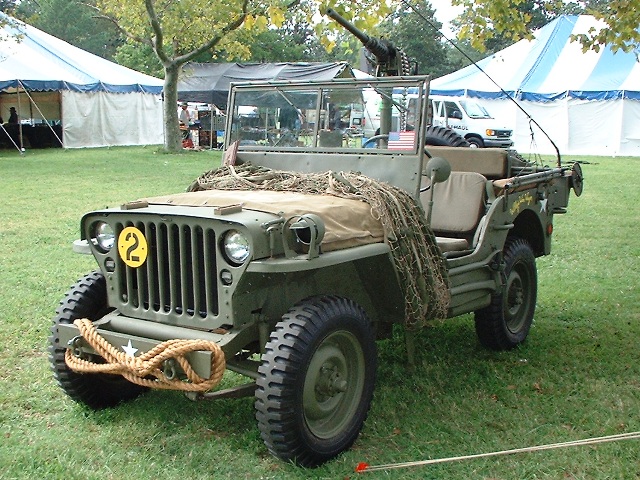
The Soviets had used civilian transport vehicles throughout the Second World War, but in the Cold War, they developed specialist military trucks.
During the late Cold War, light weight and mobility became increasingly important, for the sake of air transport. Engines were developed that could cope with whatever fuel was available, to avoid critical shortages.
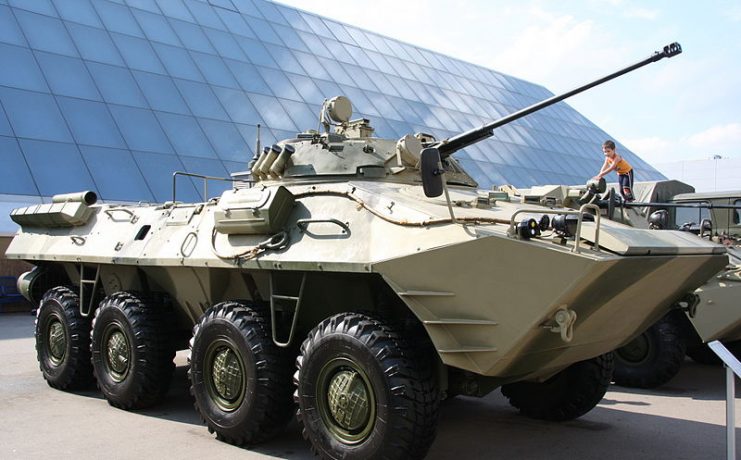
Artillery
Like tanks, self-propelled artillery kept developing along familiar lines – bigger guns, better armor, more mobility.
One distinctive trend in the Cold War was the growth of rocketry. The Soviets in particular had great faith in missiles and invested in a range of vehicles specially built to fire them. Some, like the Frog series, carried and fired a single massive missile at the time. Others could launch small salvos.
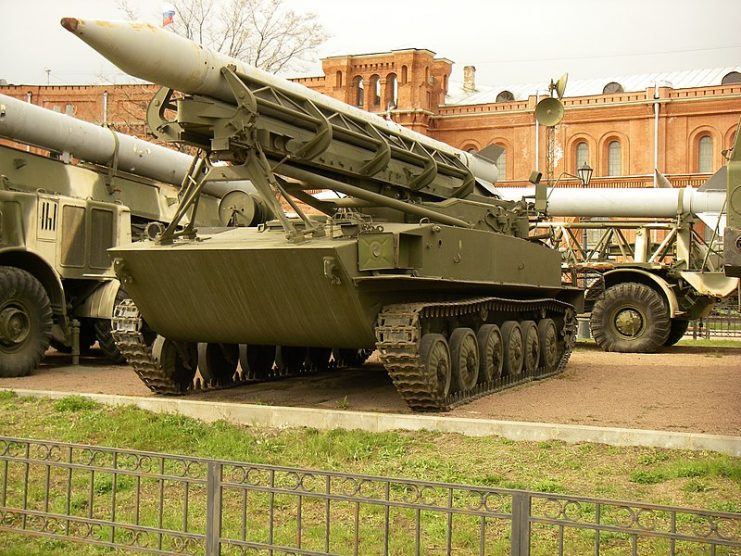
Read another story from us: Cold War Recon – 5 Soviet and Warsaw Pact Reconnaissance Vehicles
By the end of the Cold War, military vehicles were more sophisticated, more varied, and more effective than ever before.
